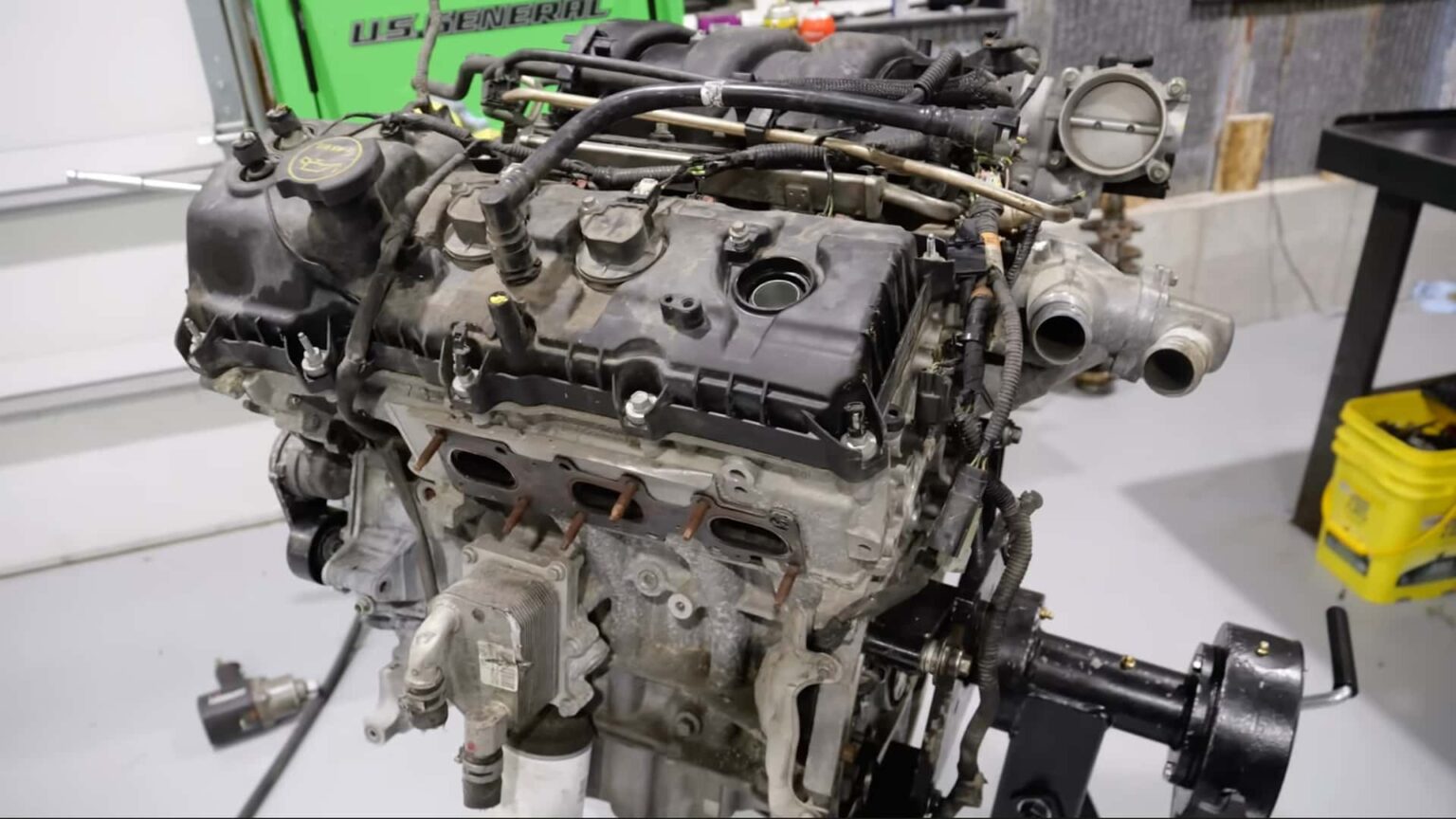The Ford 3.7-liter Cyclone V-6 engine powered an assortment of vehicles for the automaker throughout the 2010s. It replaced the 4.0-liter V-6 in the Mustang, giving the pony car over 300 horsepower in its base form. Ford put it in the F-150 and Explorer, too, but there are some design differences depending on which vehicle you choose. Those differences can greatly determine your future ownership experience.
The V-6 you see here came out of a 2019 Ford Explorer Police Interceptor, and because of its transverse layout, the engine features an internally mounted water pump. It’s nestled in the V, driven by the timing chain. The tension can cause the seal to fail, letting coolant seep into the crankcase and mix with the oil, which is terrible for engines.
This water pump was heavily damaged, with chunks of the impeller missing. And there was plenty of evidence of its demise. There was coolant where there shouldn’t have been, and plenty of metal flakes littered throughout the engine and oil.
What’s most concerning is this engine’s mileage. The V-6 had around 50,000 miles when it failed. It was in a police vehicle, which means idling for long periods, which might have hastened its failure. But still, that’s an incredibly low interval for such a large amount of damage.
One of the only ways to avoid catastrophic engine failure is to replace the water pump before it goes bad, though considering how far it’s buried, be prepared to spend a lot to have it done. Otherwise, your Ford V-6 might end up like this one.
Read the full article here



